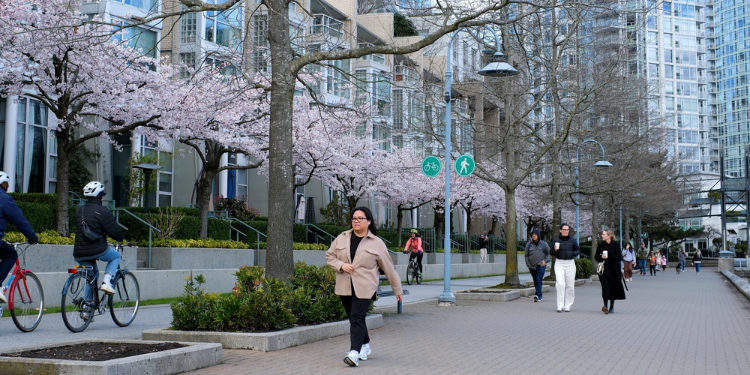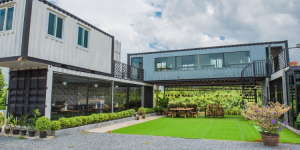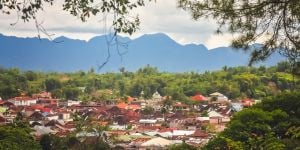
Will the housing crisis affect the policies of major immigration countries? Inflation is driving up all costs worldwide, and rents are no exception. Countries are becoming increasingly expensive with fewer housing options available. This situation could benefit other countries that are also trying to attract expats, especially international students.
The housing crisis and immigration
In Canada, a historic land of immigration, the housing shortage has become a critical issue. An additional 3.5 million new homes are needed for the country to emerge from the crisis by 2030. At the current rate of construction, this mission looks impossible. In the UK, the housing crisis is holding back recruitment. Since 2022, the country has been facing social unrest and demonstrations. Anger is growing as wages get absorbed into housing. This is awful publicity for a country still reeling from the consequences of the Covid and the tightening of its immigration policy.
In Australia, another popular expat hotspot, the situation is similar for professionals and international students. The housing crisis is forcing the government to make new decisions. Prime Minister Anthony Albanese recently announced the introduction of bonuses for states that build more new homes than they need. The bonus will be worth up to AUD 3 million. The government hopes the bonus will be enough of an incentive to get new housing projects underway. Australia needs 1.2 million new homes in the next 5 years. This is an urgent matter as the housing crisis is driving up rents and making many tenants vulnerable. International students may be particularly vulnerable, especially considering the rise in their tuition fees.
The situation is similar in France and the United States, where housing is becoming increasingly scarce and expensive, putting additional pressure on international students and workers. Inflation adds to the pressure and causes prices to soar. Will this affect immigration plans? While some countries are reeling from the housing crisis, others can benefit from it to attract foreign talent. Let's have a look at the situations in Canada and South Korea.
Housing shortage in Canada
Canada is considering a cap on student visas to solve the housing crisis. Caught in the middle of an ever-growing housing crisis, the government is taking a radical step under pressure. But some experts are dubious. What if the problem is (partly) due to a lack of housing and rapid population growth? While the number of construction sites is decreasing, the number of residents is increasing, especially expatriates. According to official figures, more than 800,000 student visas were active in 2022.
Economists from the National Bank of Canada point out that the country was home to 204,000 working-age people in the first quarter of 2023. In the same period, however, only 57,000 new homes were built across the country. In June 2023, the Canada Mortgage and Housing Corporation (CMHC) reported a 23% drop (compared to April). Significant slowdowns in construction can be seen in Vancouver (-45%), Montreal (-35%) and Toronto (-28%), all cities popular with expatriates.
An undeniable link between immigration and economic growth
For Sean Fraser, former Minister of Immigration and now Minister of Housing since the recent Trudeau reshuffle in July, the "sharp increase in student numbers" is indeed "putting pressure on certain real estate markets. However, he points out that capping the number of student visas is only one of the solutions being considered. In the face of opposition, Fraser reiterates that the immigration plan (to welcome 485,000 new permanent residents by 2024 and 500,000 by 2025) remains on track. Therefore, more than capping this figure will be needed to solve the housing crisis.
Meanwhile, the real estate market is picking up, thanks partly to accelerating demographic growth and immigration. With shortages in many sectors, Canada still needs foreign workers. Therefore, the immigration policy must be maintained to attract and, above all, retain expatriates. Home sales are on the rise again, up +5.1% since April. Between May 2022 and May 2023, sales were already up +1.4%. But rising interest rates are pushing up prices and squeezing the budgets of residents already hit by the economic crisis. This is another facet of the housing crisis and an additional challenge for the government.
South Korea: An up-and-coming international student hotspot?
The South Korean government recently launched the Study Korea 300K strategy to attract 300,000 international students by 2027. This is a matter of urgency for the country as it faces the consequences of a sharp demographic decline: fewer young people, fewer students, fewer graduates, and fewer workers. The Study Korea 300K strategy is expected to attract foreign talent quickly, with just as many skilled workers as South Korea needs. South Korea is struggling with Japan and Taiwan, direct competitors also facing labor shortages and demographic decline. Japan has launched a similar strategy to that of South Korea, with hopes for Tokyo to attract 400,000 international students by 2033.
While South Korea can count on the strength of its soft power to stand out from the crowd, it also wants to take advantage of the overcrowding in traditional student destinations led by Canada. As major immigration countries struggle to find solutions to accommodate foreign talent, South Korea keeps its doors wide open. And it seems that the message from the South Korean government is getting through. International enrollment is on the rise: +17.6% between June 2022 and June 2023. There were 207,125 new enrollments in June 2023. But the government aims to achieve higher than the 300,000 figure. According to Minister of Education and Deputy Prime Minister Ju-ho, international students "can help South Korea become one of the top 10 study destinations by 2027".
South Korea's strategy for attracting expatriates
The South Korean government is planning several changes. The quota for government scholarships (Global Korea Scholarships) will be expanded, with special scholarships for foreigners studying science, technology, engineering and computer science (STEM). Foreigners studying outside of Seoul will also benefit. Other scholarship increases will target specific countries, such as Poland and the United Arab Emirates (for students in nuclear and defense technologies). India and Pakistan will be the new preferred countries for recruiting STEM students as Seoul seeks to reduce its dependence on China, Vietnam and Uzbekistan. An additional 6,000 places will be reserved for foreign non-STEM students.
To attract and retain international students after graduation, the South Korean government plans to expedite applications for permanent residency. Currently, students must wait 6 years to qualify for permanent residency. The waiting period will be reduced to 3 years under the new government plan.
However, opinions differ on the required language level. The government is considering lowering the level of the Topik, the Korean exam required for university entrance. A level of 3 (basic intermediate) may now be accepted, as opposed to the current level of 4 (advanced intermediate). Some university officials are up in arms, arguing that lowering the level makes no sense. They point to the difficulties caused by a low level of Korean (despite the required level of 4). English language proficiency also needs to be improved. As a result, many applications from international students are rejected for lack of language skills.
Among other measures introduced to help international students, the government plans to lower the minimum bank deposit required for a visa and increase the number of hours allowed to they can work while studying from 20 to 25 hours per week.



















